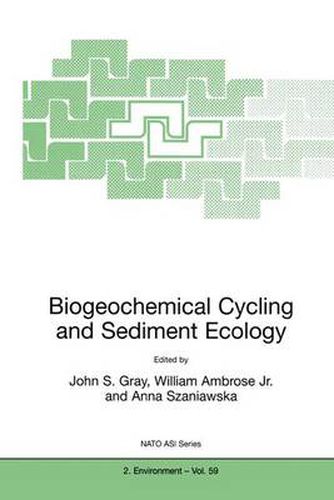Readings Newsletter
Become a Readings Member to make your shopping experience even easier.
Sign in or sign up for free!
You’re not far away from qualifying for FREE standard shipping within Australia
You’ve qualified for FREE standard shipping within Australia
The cart is loading…






This title is printed to order. This book may have been self-published. If so, we cannot guarantee the quality of the content. In the main most books will have gone through the editing process however some may not. We therefore suggest that you be aware of this before ordering this book. If in doubt check either the author or publisher’s details as we are unable to accept any returns unless they are faulty. Please contact us if you have any questions.
Oceanographic discontinuities (e. g. frontal systems, upwelling areas, ice edges) are often areas of enhanced biological productivity. Considerable research on the physics and biology of the physical boundaries defining these discontinues has been accomplished (see [I D. The interface between water and sediment is the largest physical boundary in the ocean, but has not received a proportionate degree of attention. The purpose of the Nato Advanced Research Workshop (ARW) was to focus on soft-sediment systems by identifying deficiencies in our knowledge of these systems and defining key issues in the management of coastal sedimentary habitats. Marine sediments play important roles in the marine ecosystem and the biosphere. They provide food and habitat for many marine organisms, some of which are commercially important. More importantly from a global perspective, marine sediments also provide ecosystem goods and services [2J. Organic matter from primary production in the water column and contaminants scavenged by particles accumulate in sediments where their fate is determined by sediment processes such as bioturbation and biogeochemical cycling. Nutrients are regenerated and contaminants degraded in sediments. Under some conditions, carbon accumulates in coastal and shelf sediments and may by removed from the carbon cycle for millions of years, having a potentially significant impact on global climate change. Sediments also protect coasts. The economic value of services provided by coastal areas has recently been estimated to be on the order of $12,568 9 10 y [3J, far in excess of the global GNP.
$9.00 standard shipping within Australia
FREE standard shipping within Australia for orders over $100.00
Express & International shipping calculated at checkout
This title is printed to order. This book may have been self-published. If so, we cannot guarantee the quality of the content. In the main most books will have gone through the editing process however some may not. We therefore suggest that you be aware of this before ordering this book. If in doubt check either the author or publisher’s details as we are unable to accept any returns unless they are faulty. Please contact us if you have any questions.
Oceanographic discontinuities (e. g. frontal systems, upwelling areas, ice edges) are often areas of enhanced biological productivity. Considerable research on the physics and biology of the physical boundaries defining these discontinues has been accomplished (see [I D. The interface between water and sediment is the largest physical boundary in the ocean, but has not received a proportionate degree of attention. The purpose of the Nato Advanced Research Workshop (ARW) was to focus on soft-sediment systems by identifying deficiencies in our knowledge of these systems and defining key issues in the management of coastal sedimentary habitats. Marine sediments play important roles in the marine ecosystem and the biosphere. They provide food and habitat for many marine organisms, some of which are commercially important. More importantly from a global perspective, marine sediments also provide ecosystem goods and services [2J. Organic matter from primary production in the water column and contaminants scavenged by particles accumulate in sediments where their fate is determined by sediment processes such as bioturbation and biogeochemical cycling. Nutrients are regenerated and contaminants degraded in sediments. Under some conditions, carbon accumulates in coastal and shelf sediments and may by removed from the carbon cycle for millions of years, having a potentially significant impact on global climate change. Sediments also protect coasts. The economic value of services provided by coastal areas has recently been estimated to be on the order of $12,568 9 10 y [3J, far in excess of the global GNP.